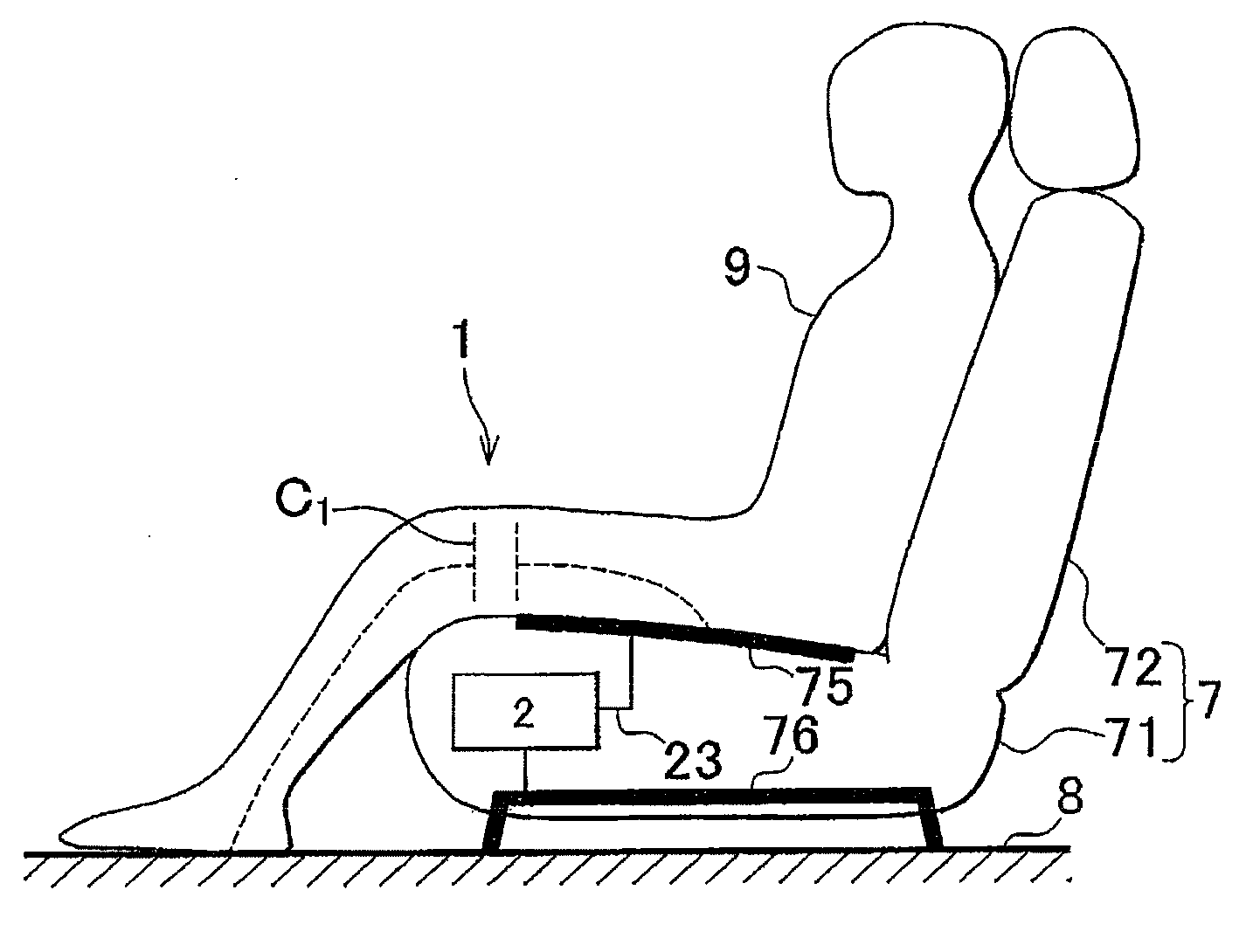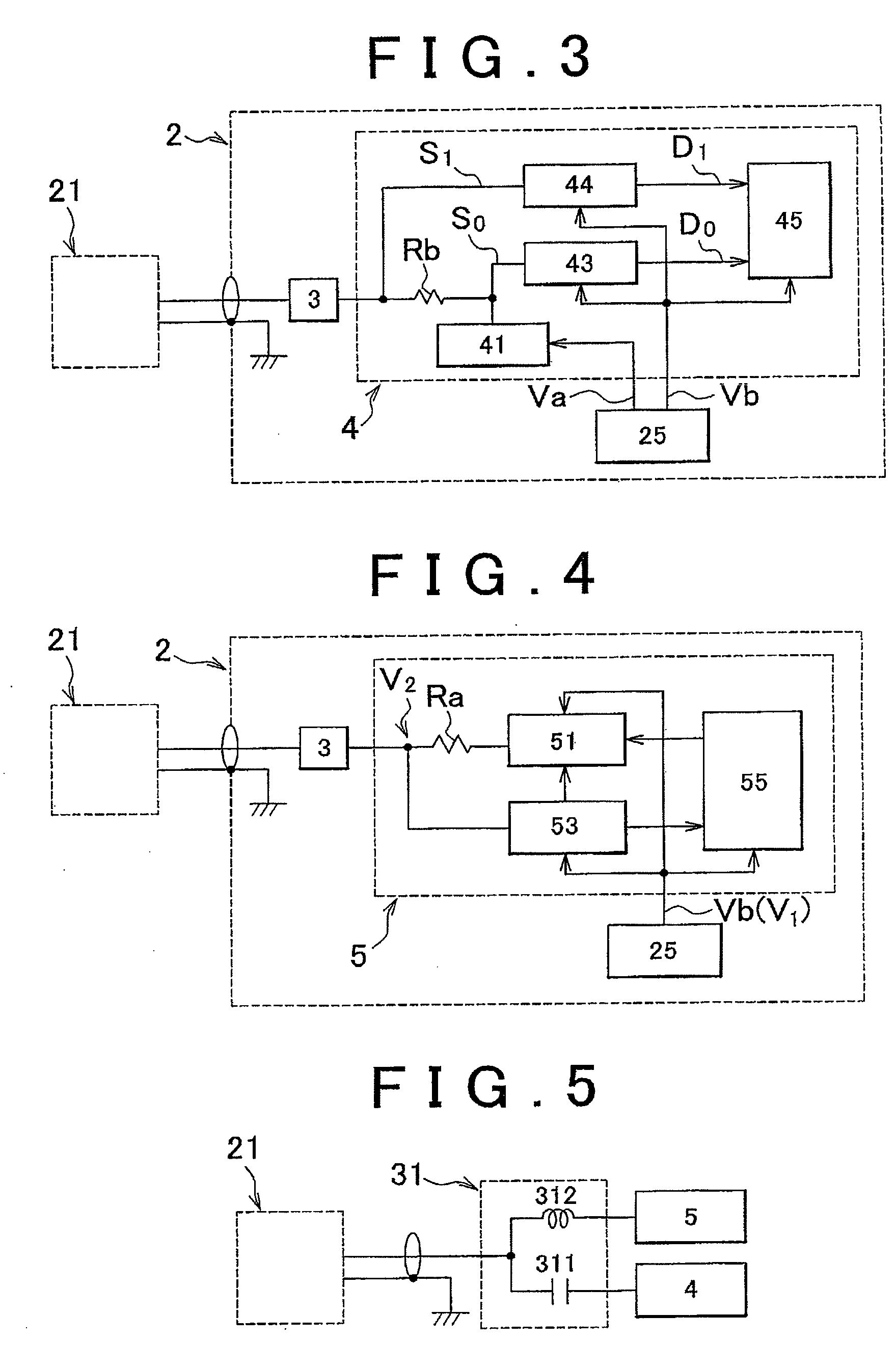Hybrid occupant detection system
- Summary
- Abstract
- Description
- Claims
- Application Information
AI Technical Summary
Benefits of technology
Problems solved by technology
Method used
Image
Examples
Embodiment Construction
[0047]The matters indicated herein are exemplary ones and those for explaining embodiments of this invention for illustrative purposes, and are stated in order to provide explanations supposed to make the principle of the invention and its conceptual features understood most effectively without difficulty.
[0048]The capacitance between a detection electrode provided in a vehicle seat and the vehicle body varies between the case where the vehicle seat is empty (i.e., no occupant is present in the seat) and the case where an occupant is present in the seat. An occupant detection system according to one embodiment of the invention is configured to detect an occupant, using a combination of a phase difference measuring unit that measures a phase lag of a sinusoidal signal detected at the detection electrode relative to a reference signal comprising a sinusoidal wave, which phase lag occurs due to the presence of an occupant in the seat, and a direct current measuring unit that applies a ...
PUM
 Login to View More
Login to View More Abstract
Description
Claims
Application Information
 Login to View More
Login to View More - R&D
- Intellectual Property
- Life Sciences
- Materials
- Tech Scout
- Unparalleled Data Quality
- Higher Quality Content
- 60% Fewer Hallucinations
Browse by: Latest US Patents, China's latest patents, Technical Efficacy Thesaurus, Application Domain, Technology Topic, Popular Technical Reports.
© 2025 PatSnap. All rights reserved.Legal|Privacy policy|Modern Slavery Act Transparency Statement|Sitemap|About US| Contact US: help@patsnap.com



